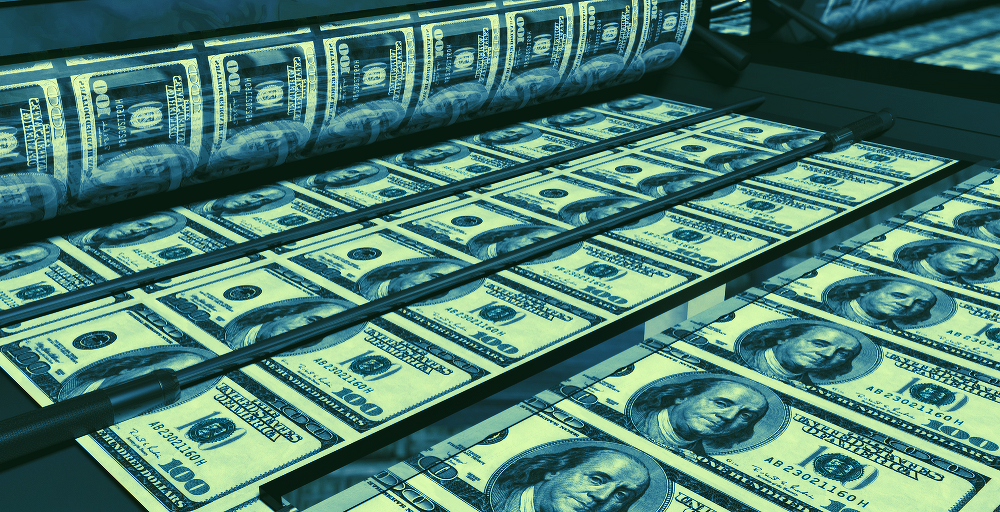Around the world, governments have printed record amounts of money in the past months as a response to the global COVID-19 crisis.
As a result, the macroeconomic issue that stands out the most in every investor’s mind: inflation.
There are many ways to hedge against inflation; the most common one is investing in asset classes that outperform the market during inflationary climates. Many investors believe that hard assets are inflation-proof, but allow me to dispel that common myth.
In this post, I will debunk the “hard assets are inflation-proof” myth and outline what to look for when making an investment to protect yourself against inflation.
The Hard Asset Myth
Investors have always touted hard (physical/tangible) assets as being inflation-proof. Businesses that have real estate, large equipment/machinery, or are commodities-based often fit this classification.
Let me illustrate why this is a myth using the following example.
Take two companies: AssetLightCo and AssetHeavyCo.
- AssetLightCo has $2m profits, $4m in assets and trades at 10x profits (which equals $20m in enterprise value)
- AssetHeavyCo has $2m profits, $20m in assets and trades at 10x profits, (which equals $20m enterprise value)
Let’s say in the next economic cycle, inflation doubles prices. This would mean that both companies need to double their earnings to keep up. Let’s also assume that both companies need to fully replace their assets as well.
Thanks to inflation, all figures increase by 2x. This means that in order to replace assets, the capital expenditure required for each company is 2x their existing asset value:
- AssetLightCo spends $8m in capital expenditures to produce $4m annual earnings and continues to trade at 10x ($40m EV).
- AssetHeavyCo spends $40m in capital expenditures to produce $4m annual earnings and continues to trade at 10x ($40m EV).
In this example, AssetLightCo only needed to spend $8m in capex to create $20m in new EV and keep up with inflation. AssetHeavyCo on the other hand needed to spend $40m in capex to create $20m in new EV.
Inflation destroyed value in AssetHeavyCo while AssetLightCo remained relatively unscathed.
I’d love to take credit for this example, but it actually originates from Berkshire Hathaway’s 1983 shareholder letter. The “AssetLightCo” is actually a Berkshire company called See’s Candies.
Now we know that hard assets may not be the key to inflation protection, let’s take a look at some factors that are.
Inflation-Proof Assets
Here are 3 main factors to look for in an inflation-proof asset.
Pricing power
In order to fight against rising costs, a business needs pricing power. The ability to increase prices without losing customers is key. If you believe inflation might be around 5% per year, you need to be able to increase your prices by that amount annually. A large part of this as well is not being locked into long-multi-year contracts with fixed pricing.
This is why my firm Atlasview loves mission-critical software, it has incredible pricing power. Software contracts are often monthly or annual which gives ample opportunities to increase pricing to keep up with inflation. And since the software is mission-critical, the high costs associated with switching keep customers locked in, even when there are yearly price increases. That being said, since software is usually a small expense in a business’s P&L, price increases are barely noticeable.
Low ongoing capital expenditures
Ongoing capital expenditures can be best described as the minimum expenditures required for a business to stay competitive. Some businesses & assets inherently require more capital expenditures than others, especially businesses with hard assets.
For example, in real estate, older buildings need a lot more capex (repairs & upgrades) than newer buildings.
In software, your R&D expenditure is your capex. Some software businesses inherently require more R&D than others. This is often the case when the software is in a competitive niche and has to launch new features frequently to keep up with market demand.
At Atlasview, we tend to look for software that is mature and stable and avoid hyper-competitive niches. We don’t want to invest in a business that needs to continually invest in R&D to stay competitive. We leave that to the venture capitalists, who underwrite product risk (R&D). As private equity investors, we underwrite execution risk (S&M).
Leverage
Leverage obviously adds another degree of risk to businesses. Not to mention, with leverage you’re also at the mercy of credit markets and interest rates.
But generally speaking, leverage is a good way to hedge against inflation. This is because the value of debt owed decreases with inflation. For example, if a business owes $1m today, that $1m will be worth less in 10 years in an inflationary environment.
This is an acceptable argument for hard assets, you can generally borrow against them much easier.
Final Thoughts
While inflation is an evergreen topic for investors, ever since central banks rolled out their aggressive monetary policies during the global financial crisis, its prominence has grown. Given it has dominated investing conversations in 2021, I had to take a moment to dispel the common myth that hard assets are inflation-proof. The reality is that it’s far more nuanced.
If you focus on investing in businesses that are asset-light with low ongoing capital expenditures and strong pricing power, you will be well-protected against inflation.
P.s. at Atlasview, these are the exact type of businesses we invest in. If you’re an accredited investor and would like to learn more about our investment strategies and get access to our deals, please apply here.
Hi there! I’m Jay Vasantharajah, a Toronto-based entrepreneur and investor.
This is my personal blog where I share my experiences and passion for investing, entrepreneurship, personal financial management, and traveling the world.
Subscribe below, to get a couple of emails a month with free, valuable, and actionable content.





5 thoughts on “The Myth Of Hard Assets Being Inflation-Proof”